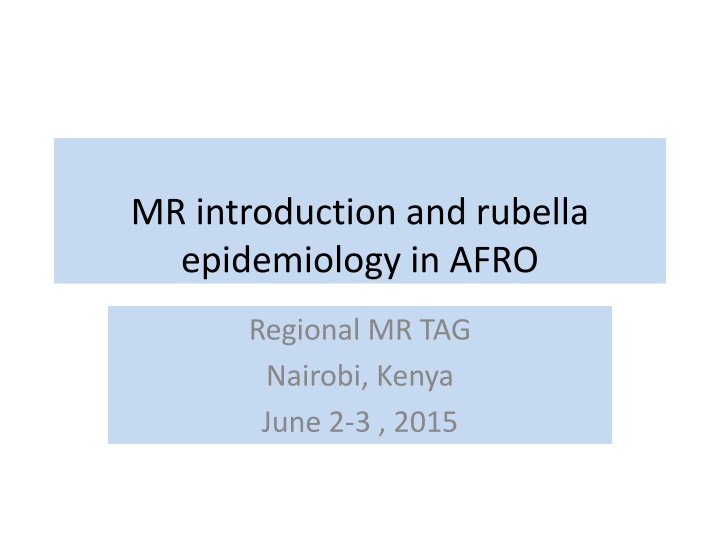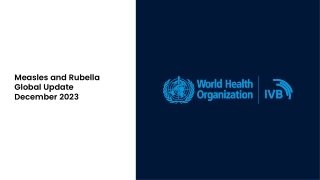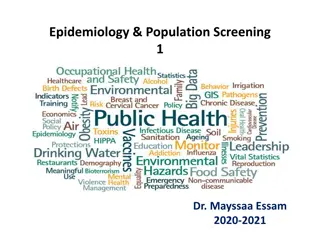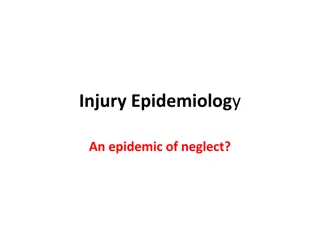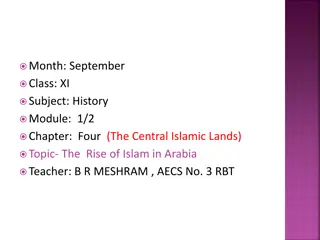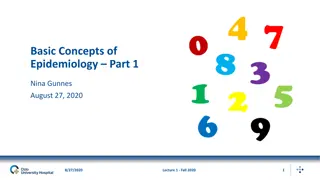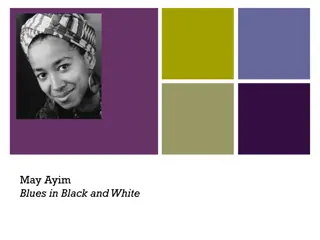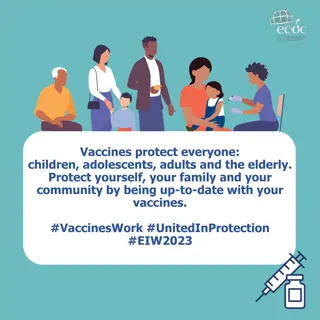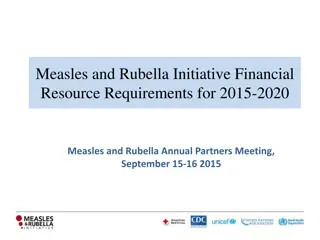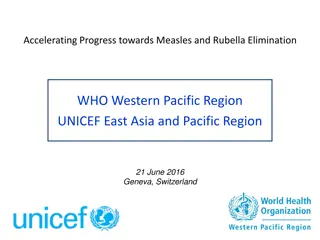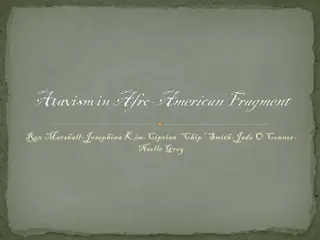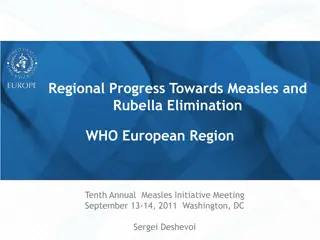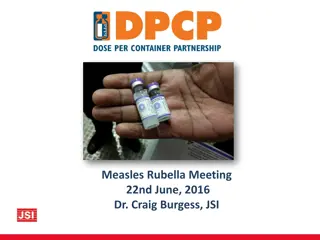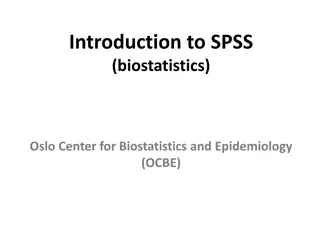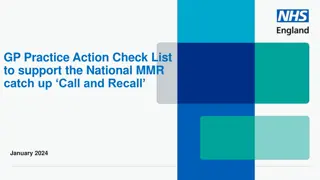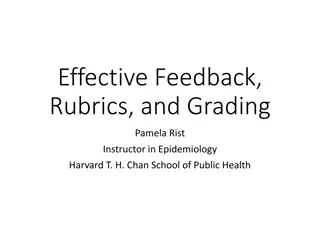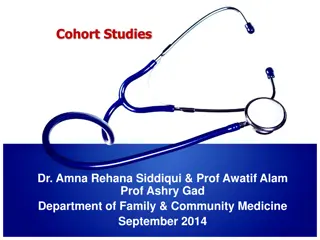MR introduction and rubella epidemiology in AFRO
Epidemiology of Rubella in AFRO region was discussed at MR Introduction and Rubella Epidemiology in AFRO Regional MR TAG held in Nairobi, Kenya in June 2015. The session covered background information, strategic options for Rubella control, progress in MR introduction, and issues faced. Discussions included the lack of a regional target for Rubella elimination, challenges in Rubella surveillance due to dependency on measles case-based data, WHO-recommended steps for introducing a new vaccine, and distribution of lab-confirmed Rubella cases from 2003 to 2014. The Regional Strategic Plan (2014-2020) aims to achieve universal immunization coverage.
Download Presentation

Please find below an Image/Link to download the presentation.
The content on the website is provided AS IS for your information and personal use only. It may not be sold, licensed, or shared on other websites without obtaining consent from the author.If you encounter any issues during the download, it is possible that the publisher has removed the file from their server.
You are allowed to download the files provided on this website for personal or commercial use, subject to the condition that they are used lawfully. All files are the property of their respective owners.
The content on the website is provided AS IS for your information and personal use only. It may not be sold, licensed, or shared on other websites without obtaining consent from the author.
E N D
Presentation Transcript
MR introduction and rubella epidemiology in AFRO Regional MR TAG Nairobi, Kenya June 2-3 , 2015
Outline Background Epidemiology of Rubella Strategic options for rubella control AFR MR introduction progress noted issues related to MR introduction in AFR Guidance requested from TAG
Background (1) No Regional target yet for Rubella elimination The Regional TAG guidance (2008) encouraging member states for uptake of RCV , that are able to achieve and sustain optimum coverage performance The regional strategic plan encouraging member states to uptake Rubella containing vaccine
Background on Rubella Surveillance Background on Rubella Surveillance (2) The rubella disease burden documentation depends on measles case based surveillance - only negative measles cases tested for Rubella Often reagents stock out may compromise testing for Rubella Limitation of country outbreak documentation hence under estimation E.g. Ethiopia outbreak of 2013, over 7000 cases confirmed Rubella in one region not in data base South Africa stopped testing for Rubella 2013 and 2014 and resuming mid year in 2015 ; 6000+ cases of suspected cases for measles only 28 tested for Rubella 4|
WHO recommended steps leading to the introduction of a new vaccine *Most use the existing Rubella data from Measles surveillance to justify introduction RCV Few countries, had special studies or sentinel surveillance data Implementation Political decision* Cold chain/logistics capacity? Financing available/sustainable? Public health priority? Vaccine cost-effective? Disease burden*? 5|
Distribution of cumulative number of lab confirmed cases of Rubella 2003-2014 ; AFR 15 Yr+_ 5% < 1 yr 5% 10 to < 14 yr 16% 1 < 4 yr 28% Data available indicates that Rubella is still mainly a childhood disease in AFRO; Females in the WCBA that are not immune to Rubella 5 to < 9 yr 46% 6|
Regional Strategic Plan 2014 - 2020 Aim of strategic plan is to ensure achievement of universal immunization coverage within the WHO African Region. To accomplish that aim, the following objectives have been defined: to improve immunization coverage beyond the current levels to complete interruption of poliovirus transmission and ensure virus containment to attain elimination of measles and make progress in elimination of rubella and congenital rubella syndrome Target: At least 25 countries to introduce rubella-containing vaccine by 2020 (10 countries by 2015, 15 countries by 2017) to attain and maintain elimination/control of other vaccine-preventable diseases 7|
Options of Rubella control Approach 1: CRS Reduction Approach 2: Rubella /CRS Elimination The preferred approach MR or MMR vaccine in a wide- age range SIAs followed immediately with introduction of MR or MMR vaccine in the routine program at 9 or 12 months of age Vaccination of adolescent and adult females only Through routine services or SIAs direct protection to WCBA However, in the absence of vaccination of infants and young children, rubella continues to circulate = ongoing exposure of pregnant women. All subsequent follow-up SIAs should use MR or MMR vaccine. 8|
Source - AFRO strategic options document GOAL Cohorts to vaccinate Reduce CRS Eliminate CRS in 20 30 yrs Eliminate CRS in 10 20 yrs Eliminate CRS in < 10 yrs WCBA RI or SIAs RI or SIAs RI or SIAs for females not targeted by previous SIAs Speed-up SIAs (targets older children, adolescents, adults) 1 4 yrs 1 dose RI and regular follow up SIAs or 2 doses in RI 1 dose RI & regular fup SIAs or 2 doses in RI after catch up SIAs ( 9 m 14 yrs) 1 dose RI and regular follow-up SIAs OR 2 doses in RI after speed-up SIAs 5 14 yrs Catch up SIAs ( 9 m 14 yrs) Speed up SIAs 9|
Lab confirmed Measles Igm+ vs Rubella IgM+, e.g. ESA Countries Measles IgM+ve Rubella IgM+ve 100% 2 90% 1614 1597 80% 2439 1716 2221 2845 4106 70% 5040 1008 2411 60% 1540 1933 50% 14 40% 5373 2672 30% 3138 1810 1959 2318 3185 20% 3203 505 1030 10% 333 178 0% 2002 2003 2004 2005 2006 2007 2008 2009 2010 2011 2012 2013 2014 SOA, not testing 2011 2015 April; Ethiopia outbreak of 2013 not included
Status of MR introduction in AFR. May 2015. 7 countries with MR in routine EPI BFA did MR SIAs, and will introduce MR in EPI in 2015 MR SIAs in 2015 in Cam, GAM, KEN, NAM, ZIM For 2016, expression of interest pending from some
Experiences from countries that introduced MR Country Date of introduction of MR Introduction into RI (Interval) Type of MCV2 vaccine Cap Verde Last quarter 2012? Since 2009 In RI MMR used Ghana September 11-20 , 2013 Immediate with no delay Monovalent for MCV2 Rwanda April 2013 Interval 6 months Monovalent for MCV2 July 2014 ; planning to switch to MR2 August 2015 Senegal Last quarter 2013 Immediate with no delay MR for MCV2 since early 2014 Tanzania 18-24, Oct 2014 October 2014 to March 2015 (5 mths) MR for MCV2 B.Faso Nov 2014 May 2015 MCV2 since Oct 2014 ;switched to MR2 by May
Noted Issues among planning countries to introduce MR in 2015 Country Planned introduction of RCV Intended timeline for RI introduction ISSUES /Comments Zimbabwe 2015 August shifted to September due to delay in supply Within 1 month of MR SIAs to introduce in RI Dates of SIAs repeatedly postponed due to supply assurance Kenya 2015 November for MR SIAs ( <15 years) MR in RI planned for 2017 Cost of MR not supported by Gavi, Country considers cost implication Cameroun Date of SIAs planned for April 2015 Date plan for RI pending Gavi approval only in May 2015, no date yet but Q4 2015 Gambia Oct 2015? January 2016 Latte Gavi approval and release of funds
Summary of issues / Comments Enough stock of Measles so delay in the MR switch GAVI does not support MR for MCV2 Long interval of MR into RI -> needed catch up to be done Issues of Co-payment so not thinking of WCBA GAVI graduating country so cautious
Follow up SIAs to use MR -2017 Ghana , Rwanda , Senegal , Tanzania Countries in pipeline to introduce MR in 2016 Burundi, Zambia, Malawi, Lesotho, Comoros, Lesotho, Madagascar
Issues noted related to MR introduction Payment related Due to cost component of MR in routine introduction countries are not taking up MR for the RI on time cohort missing on the Rubella component if not high coverage in the countries Stock related Continued use of existing measles vials until phased out with interval prior to switching to MR in RI Supply time line frequently changing for Gavi supported countries implications on delayed preparation for SIAs
Issues noted related to MR introduction (1) Challenge of MR and MCV in same fridge Storage volume Wastage Documentation of doses administered ( MR or MCV), Health workers inconvenience (dose 1 and dose 2 , different formulations) Vaccine formulation - Self financing vs GAVI supported countries Limited suppliers of MR for self financing countries limits their choice towards MMR Countries are forced to introduce MMR instead of Needs advocacy with manufacturers
Issues noted related to MR introduction (2) Postponement of MR introduction with lack of epidemiological evidence, not perceived as public health problem Eritrea, Zambia, Ethiopia The vaccination of Health care workers against Rubella in time of outbreaks Namibia to vaccinate female health workers against Rubella MMR vs MR discussions to guide countries Dialogue with countries - with no disease burden disease burden documentation for mumps , and or limited supplier for self financing requests with MR (BOT, NAM , SOA , LES)
Summary The existing rubella surveillance data being used to make decision of introduction in most countries Few countries have sentinel CRS and special studies Despite the limitations, the descriptive epidemiology in the region is indicative of Rubella being mainly childhood disease With the current plan , the target of introduction with partners support and Government commitment is likely to be met The delay of switch to MR into RI is creating a gap following the catch up SIAs in some countries - Cost implication is limiting the uptake For self financing countries & Gavi graduating countries with background of the limited supplier is a rate limiting step to the uptake of RCV
Requested guidance from MR TAG What will be the guidance for countries that have introduced MR ..considering the WCBA ? GAVI funding model for MR introduction to ensure that countries introduce in RI as early as possible after SIAs.
